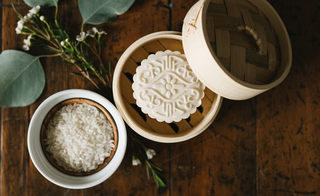Welcome to the era of eco-conscious hair care! As sustainability takes center stage in personal grooming, conditioner bars have emerged as a promising alternative to traditional liquid conditioners. These compact, eco-friendly bars offer a powerhouse of benefits while minimizing environmental impact. In this comprehensive guide, we’ll delve into the composition of conditioner bars, uncover their myriad benefits, and explore why they're becoming a go-to choice for many.
Understanding Conditioner Bars: A Breakdown of Composition
Conditioner bars, much like their shampoo counterparts, boast a simplified yet effective composition. They typically consist of natural ingredients such as cocoa butter, shea butter, essential oils, and plant-based emollients like coconut oil or argan oil. These components work in synergy to nourish and hydrate hair without the need for harsh chemicals or preservatives commonly found in liquid conditioners.
Key Components in Conditioner Bars:
1. Emollients: These include natural oils like coconut, argan, or jojoba oil, which soften and smoothen hair.
2. Cetyl alcohol or Stearyl alcohol: These fatty alcohols act as emulsifiers and thickeners, contributing to the solid form of the bar.
3. Panthenol (Pro-Vitamin B5): Known for its hair-strengthening properties, panthenol helps improve hair elasticity and moisture retention.
4. Essential Oils: Often added for fragrance and additional hair benefits, such as peppermint oil for scalp stimulation or lavender oil for soothing properties.
The Benefits of Using Conditioner Bars
1. Eco-Friendly: With minimal to zero plastic packaging, conditioner bars significantly reduce environmental waste.
2. Travel-Friendly: Their solid form makes them TSA-friendly and convenient for travel without spillage or liquid restrictions.
3. Longevity: Due to their concentrated formula, conditioner bars tend to last longer than liquid conditioners, offering extended use.
4. Customization: Many brands offer a variety of bars tailored for different hair types or specific concerns like volume, hydration, or repair.
How to Use Conditioner Bars Effectively
Using a conditioner bar is a straightforward process:
1. Wet your hair thoroughly.
2. Rub the conditioner bar between your hands or directly onto your hair.
3. Massage the product into your hair, focusing on the mid-lengths to ends.
4. Rinse thoroughly.
Addressing Common Concerns and Misconceptions
One common concern is the transition period when switching from liquid to solid conditioners. Some individuals may experience an adjustment phase as their hair adapts to the new product. However, persisting through this phase often leads to healthier, more manageable hair.
Choosing the Right Conditioner Bar for Your Hair Type
Consider your hair type and specific needs when selecting a conditioner bar. Brands offer formulations suited for different hair textures, whether it's dry, oily, curly, or color-treated hair. Reading labels and understanding ingredient lists can help you find the perfect match.
In Conclusion:
Conditioner bars represent a pivotal shift towards sustainable hair care without compromising on quality. Their natural composition, coupled with a range of benefits, makes them a frontrunner in the quest for eco-friendly grooming solutions. Embrace the simplicity and effectiveness of conditioner bars for luscious locks while contributing positively to the planet.
Remember, making the switch to conditioner bars not only nurtures your hair but also supports a greener, more sustainable future for all.
Understanding Conditioner Bars: A Breakdown of Composition
Conditioner bars, much like their shampoo counterparts, boast a simplified yet effective composition. They typically consist of natural ingredients such as cocoa butter, shea butter, essential oils, and plant-based emollients like coconut oil or argan oil. These components work in synergy to nourish and hydrate hair without the need for harsh chemicals or preservatives commonly found in liquid conditioners.
Key Components in Conditioner Bars:
1. Emollients: These include natural oils like coconut, argan, or jojoba oil, which soften and smoothen hair.
2. Cetyl alcohol or Stearyl alcohol: These fatty alcohols act as emulsifiers and thickeners, contributing to the solid form of the bar.
3. Panthenol (Pro-Vitamin B5): Known for its hair-strengthening properties, panthenol helps improve hair elasticity and moisture retention.
4. Essential Oils: Often added for fragrance and additional hair benefits, such as peppermint oil for scalp stimulation or lavender oil for soothing properties.
The Benefits of Using Conditioner Bars
1. Eco-Friendly: With minimal to zero plastic packaging, conditioner bars significantly reduce environmental waste.
2. Travel-Friendly: Their solid form makes them TSA-friendly and convenient for travel without spillage or liquid restrictions.
3. Longevity: Due to their concentrated formula, conditioner bars tend to last longer than liquid conditioners, offering extended use.
4. Customization: Many brands offer a variety of bars tailored for different hair types or specific concerns like volume, hydration, or repair.
How to Use Conditioner Bars Effectively
Using a conditioner bar is a straightforward process:
1. Wet your hair thoroughly.
2. Rub the conditioner bar between your hands or directly onto your hair.
3. Massage the product into your hair, focusing on the mid-lengths to ends.
4. Rinse thoroughly.
Addressing Common Concerns and Misconceptions
One common concern is the transition period when switching from liquid to solid conditioners. Some individuals may experience an adjustment phase as their hair adapts to the new product. However, persisting through this phase often leads to healthier, more manageable hair.
Choosing the Right Conditioner Bar for Your Hair Type
Consider your hair type and specific needs when selecting a conditioner bar. Brands offer formulations suited for different hair textures, whether it's dry, oily, curly, or color-treated hair. Reading labels and understanding ingredient lists can help you find the perfect match.
In Conclusion:
Conditioner bars represent a pivotal shift towards sustainable hair care without compromising on quality. Their natural composition, coupled with a range of benefits, makes them a frontrunner in the quest for eco-friendly grooming solutions. Embrace the simplicity and effectiveness of conditioner bars for luscious locks while contributing positively to the planet.
Remember, making the switch to conditioner bars not only nurtures your hair but also supports a greener, more sustainable future for all.


